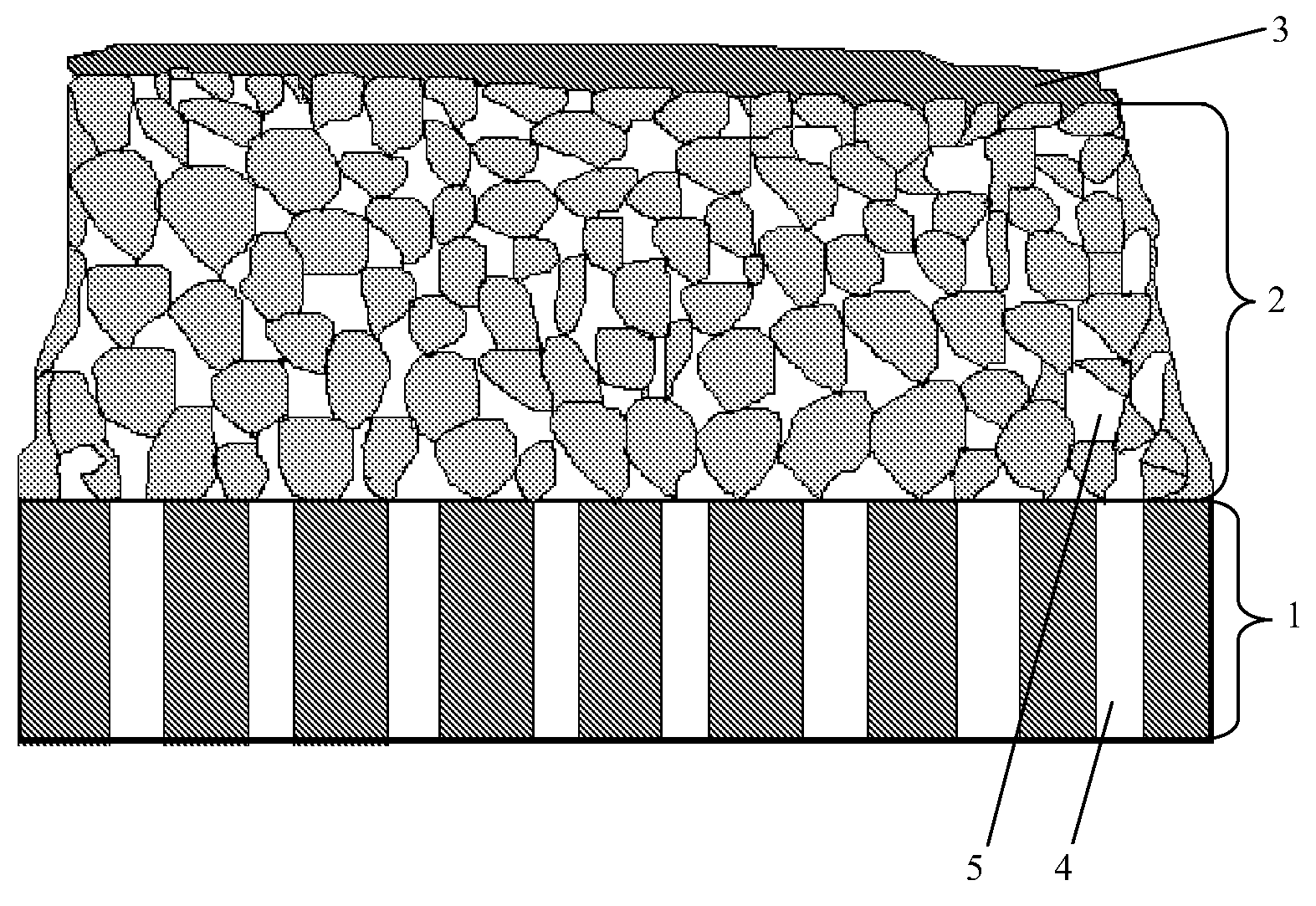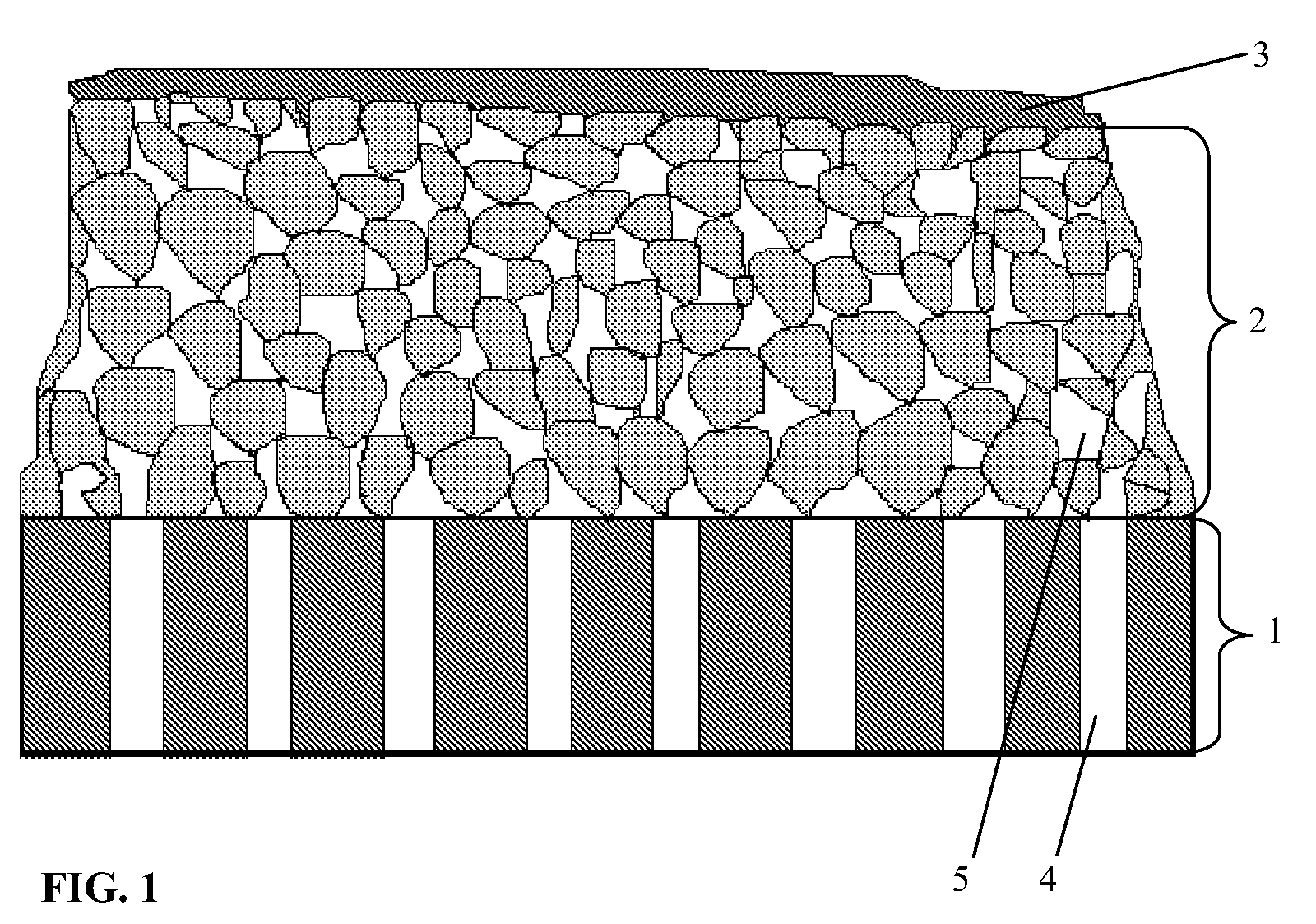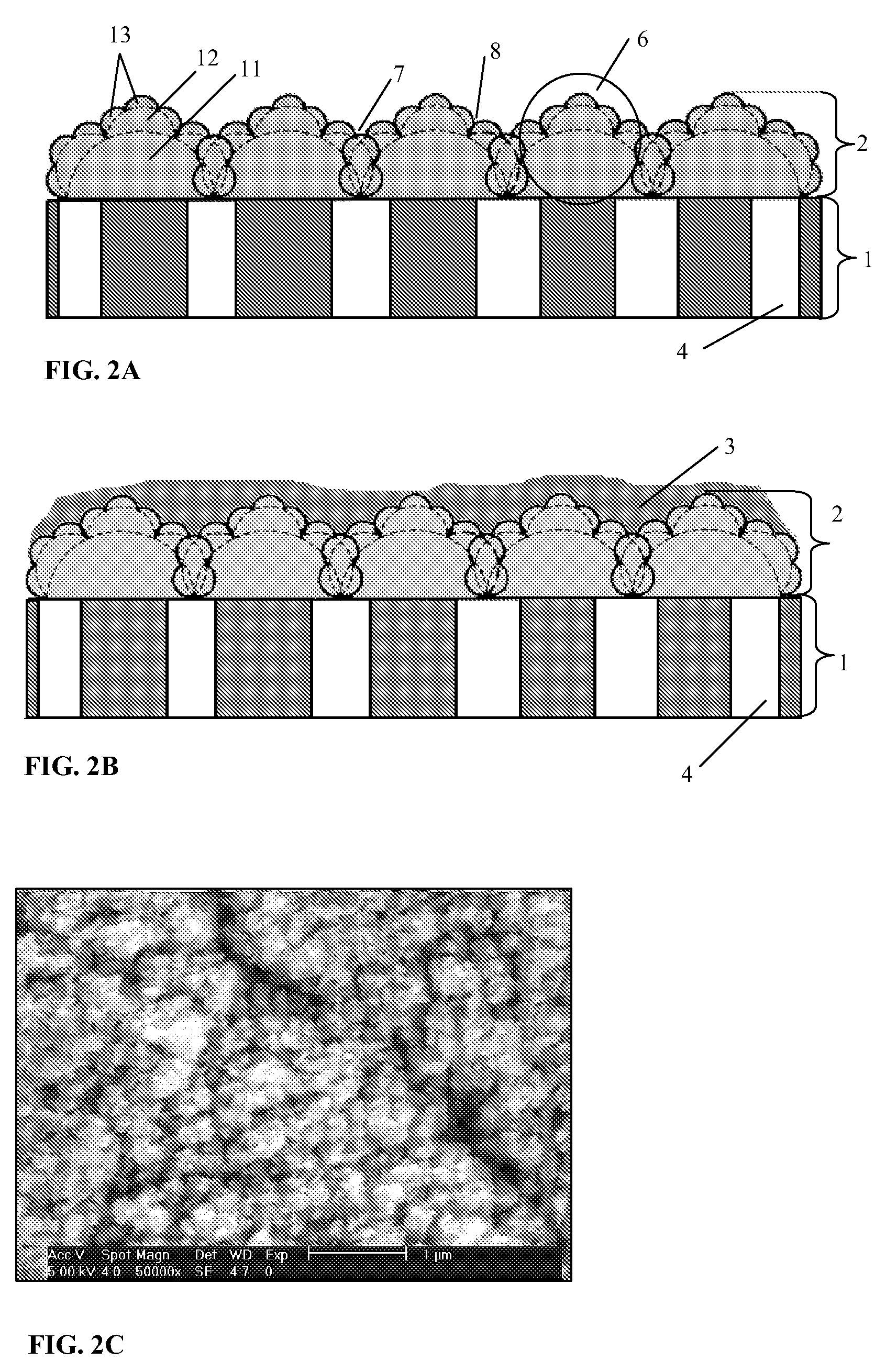Composite inorganic membrane for separation in fluid systems
a technology of fluid system and composite membrane, applied in the field of composite membrane, can solve the problems of destroying the composite membrane, not being able to survive, not performing well, etc., and achieve the effects of high selectivity, high flux, and high flux
- Summary
- Abstract
- Description
- Claims
- Application Information
AI Technical Summary
Benefits of technology
Problems solved by technology
Method used
Image
Examples
example 1
Deposition of a Ceramic (Alumina) Layer onto a Stainless Steel Mesh Substrate in a Vacuum Evaporation Apparatus Operating in Batch Mode
[0122]The substrate is a stainless steel mesh from KOIWA KANAAMI CO. having the following parameters: thickness of 38±2 μm, aperture size 46 μm, strand width 18 μm; and open area 51% was annealed for one hour at a temperature of 450-500° C. to remove residual oil and was placed in a deposition chamber from which air was then evacuated until a vacuum of 2·10−4 Torr was attained. An aluminum wire intended for evaporation was wound onto a drum and fed to the evaporation boat at a rate of 0.64-0.68 g / min, where it was evaporated by thermal resistive evaporation onto one side of the stainless steel mesh at a temperature of about 250-270° C., while oxygen in an amount varied between 320 cc / min and 340 cc / min, and argon in an amount varied between 45 cc / min and 50 cc / min (volume flow rates of both gases are referred to standard conditions) were introduced i...
example 2
Deposition of a Ceramic (Aluminum / Alumina) Layer onto a Stainless Steel Mesh Substrate in a Vacuum Evaporation Apparatus Operating in Batch Mode
[0124]The substrate is a stainless steel mesh from KOIWA KANAAMI CO. having the following parameters: thickness of 38±2 μm, aperture size 46 μm, strand width 18 μm; and open area 51% was annealed for one hour at a temperature of 450-500° C. to remove residual oil and was placed in a deposition chamber from which air was then evacuated until a vacuum of 2·10−4 Torr was attained. An aluminum wire intended for evaporation was wound onto a drum and fed to the evaporation boat at a rate of 0.64-0.68 g / min, where it was evaporated by thermal resistive evaporation onto one side of the stainless steel mesh at a temperature of about 270-300° C., while oxygen in an amount varied between 90 cc / min and 100 cc / min, and argon in an amount varied between 45 cc / min and 50 cc / min (volume flow rates of both gases are referred to standard conditions) were intr...
example 3
Deposition of a Ceramic (Alumina) Layer onto Through Hole-Type Etched Aluminum Foil in a Vacuum Evaporation Apparatus Operating in Batch Mode
[0126]This was carried out similarly to Example 1, with the difference that the substrate was through hole-type etched aluminum foil and the deposited layer had a thickness of 12 μm. The product is a composite membrane having a ceramic selective layer.
[0127]A SEM micrograph of the deposited layer is shown in FIG. 11, from which it can be seen that the deposited layer has a dendrite structure. Further, the surface characterization was performed using the same method and instruments as in Example 1. The resulting pore distribution chart is presented in FIG. 12, from which it can be seen that the deposited layer has narrow pores in the width range of about between 21 and 62 nm, and wide pores of width about 227 nm.
PUM
| Property | Measurement | Unit |
|---|---|---|
| temperatures | aaaaa | aaaaa |
| temperatures | aaaaa | aaaaa |
| temperatures | aaaaa | aaaaa |
Abstract
Description
Claims
Application Information
 Login to View More
Login to View More - R&D
- Intellectual Property
- Life Sciences
- Materials
- Tech Scout
- Unparalleled Data Quality
- Higher Quality Content
- 60% Fewer Hallucinations
Browse by: Latest US Patents, China's latest patents, Technical Efficacy Thesaurus, Application Domain, Technology Topic, Popular Technical Reports.
© 2025 PatSnap. All rights reserved.Legal|Privacy policy|Modern Slavery Act Transparency Statement|Sitemap|About US| Contact US: help@patsnap.com



